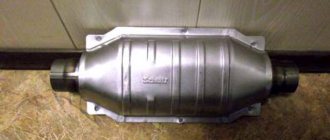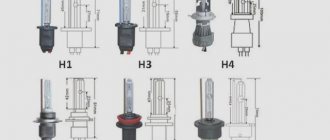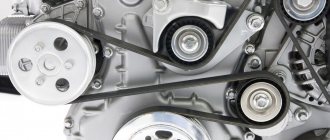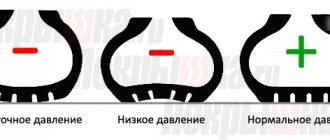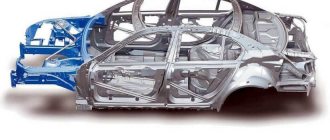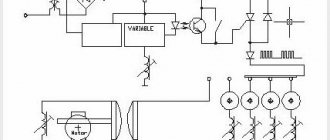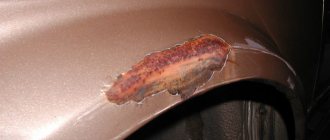Sooner or later, car owners are faced with the need to remove the catalyst. Or they think they are colliding. Or they are simply convinced of this. We talked with a specialist from the Mastery service station, who specializes in solving any problems with the muffler - the engine exhaust system.
– In fact, few car owners have a correct idea of when to remove the catalyst. Another thing is that not all car services are competent in this matter and sometimes offer to remove the catalyst in any unclear situation, explains the specialist. – In addition, a lot of incorrect information has accumulated on the Internet, after reading which, many car owners often make the wrong decision to remove the catalyst.
When do you really need to remove the catalyst?
It's no secret that the inside of the catalyst is a ceramic or metal honeycomb, on the walls of which special elements are applied that act as catalysts for chemical reactions, during which harmful compounds such as hydrocarbons (CH), nitrogen oxides (NOx), carbon monoxide ( CO), disintegrate and oxidize to harmless carbon dioxide (CO2) and water vapor (H2O). Thus, passing through the catalyst, the exhaust gases become cleaner and do not stink as much.
There are many symptoms indicating aging of the catalyst and its failure. These symptoms are slightly different for petrol and diesel cars.
On gasoline cars with a catalyst, two things can happen: ● reduced efficiency; ● mechanical destruction.
On diesel vehicles with a catalyst, the following may occur: ● clogging with soot.
Let's consider all catalyst malfunctions in more detail.
How not to carry out the procedure
Some craftsmen, in order to save time, use a “barbaric” method of restoring the functionality of the catalyst. They simply punch holes in the parts to return power to the engine.
This cleaning method completely disables the catalyst. The noise level when driving a car increases, and exhaust pollution becomes maximum. It is worth remembering that operating a car with a non-functioning catalyst leads to various problems with the engine.
Video: how the catalyst works
In Russia, there are no clear requirements for the content of toxic substances in car exhaust gases, so each car owner can decide on their own whether a catalytic converter is needed in the engine. Many drivers are forced to remove this part from their cars, since the quality of gasoline in our country leaves much to be desired. As a result, air pollution from exhaust gases, especially in megacities, becomes critical and seriously harms people.
- Author: OKM
Rate this article: (12 votes, average: 4.7 out of 5)
Decrease in catalyst efficiency
Over time, the catalyst gradually loses its ability to purify exhaust gases, and the car ceases to meet its environmental emission standards (for example, Euro 4, Euro 5). And if the car is equipped with a second lambda probe, located after the catalyst, and which is diagnostic (since about 1999, it has already been installed on almost all cars), then an error lights up on the instrument panel, which in computer diagnostics most often has the number P0420 and is deciphered as “The degree of conversion of the catalytic converter is below the threshold value”, “aging of the catalyst”, “insufficient efficiency of the catalyst”, etc. It is clear that this error will also appear if the catalyst is removed. What to do?
In most cases, this error has absolutely no effect on the operation of the engine and does not affect the driving of the car, but many car owners are quite rightly not satisfied with the extraneous “light” constantly burning in front of their eyes, and they would like to make sure that it does not burn. There are three ways to clear the error. The first is the installation of a new original or universal catalyst, which, in fact, is provided for by automakers and legislation throughout the civilized world. Indeed, you can buy a new catalyst, but no one does this because of the high price of a new catalyst. A new original catalyst is an expensive part, which will cost from several hundred dollars to a thousand or even more. Therefore, in our country no one installs a new catalyst, especially an original one, of their own free will. But there is a more budget-friendly alternative to the “original” - a new universal catalyst. True, this solution is not always suitable. In some cases, when the original catalyst has a very specific shape and location, it may be difficult to select a universal one that is suitable in size. In addition, they are, as a rule, made in China, and their service life and the strength of the ceramic itself are significantly lower than that of the original. Therefore, in cases where installing a universal catalyst is the optimal solution, we offer it exclusively in a metal version, since metal honeycombs are at least not subject to crumbling into pieces, unlike fragile ceramics. In general, it should be understood that a catalyst is such a thing, the safety and service life of which depend to a lesser extent on the catalyst itself, but are mainly determined by the conditions in which it operates. The technical serviceability of the engine, in particular the normal operation of the fuel system and ignition system, allows the catalyst to serve for a long time. That is why, when buying a catalyst, you will never receive any serious warranty on it, even if you buy the original from an authorized dealer. Too many external factors can have a negative impact on the catalyst life.
The second way to remove the “catalyst” error is to place a special spacer under the second lambda probe, which is also known as a “lambda probe decoy”. This decoy reduces the amount of exhaust gases entering the lambda probe, and if it is improved, with a small catalyst inside, then this exhaust also undergoes some cleaning. As a result, the lambda probe sends signals to the control unit that correspond to a properly functioning catalyst, so the error does not light up. If the lambda probe snag does not help, there is a third method - software disabling the second lambda probe. This procedure is known as “Euro 2 flashing”. Reflashing consists of editing the factory settings of the engine control unit (“brains”) in such a way that the second lambda probe does not appear in it and is not interrogated, and otherwise the engine operates the same as before. However, this solution is not applicable to all cars; a lot depends on the year of manufacture and model of the control unit. Also, in some cases, software error elimination is only possible by increasing the threshold values of the signal from the second lambda probe, while the sensor itself must remain in place and be in good working order.
Is it bad when this element fails?
From what was said earlier, it becomes clear that the catalyst is an element necessary to improve the environmental characteristics of the car.
But if it doesn’t exist, then the technical characteristics, including power and fuel consumption, will, on the contrary, begin to improve. The engine itself does not care whether there is a catalyst in the exhaust system or not. This is necessary so that the car meets environmental standards, does not pollute the environment, and can be driven in countries where environmental standards are the highest. EU countries can easily be included among them. Russia also has environmental rules, but they are somewhat less stringent.
So if you cut it out, what will change in the car? Almost nothing.
But here it’s fair to ask why the Check light comes on on the car and problems arise in the operation of the internal combustion engine.
When the catalyst melts or becomes clogged, the gas can no longer easily pass through it. Because of this, part of the gas that has already left the engine begins to return back and enters the combustion chamber.
Literally speaking, the engine begins to choke itself.
But when you checked the catalyst for cloggedness, and it turned out that everything was fine with it, you can assume a different scenario as to why the check engine light is on. This is often due to trivial mileage and natural wear and tear. Modern cars have lambda probes, that is, oxygen sensors. One is before the catalyst, the second after. They give a signal about the operation of the unit and check the degree of purity of the gas. If the level of harmful emissions increases, then the probe gives a signal about the failure of the catalyst or a decrease in its performance.
Here you will need to change the neutralizer.
You also need to be prepared for this.
Mechanical destruction of the catalyst
If the engine works perfectly and without failures throughout its life, then theoretically the catalyst can remain intact for the entire service life of the car, even if it has long lost its effectiveness. But, unfortunately, this does not always happen and not for everyone. The catalyst is a rather vulnerable part, and any malfunction of the fuel system or ignition can lead to its destruction. How does this happen? Very simple.
If the engine is unstable, troits or the valve timing is disrupted, then the unburned gasoline in the cylinder enters the catalyst, ignites there, instantly heating it to such temperatures at which the ceramic overheats (literally glows red), loses its strength and subsequently begins to crumble into pieces and grind into dust. Or it may immediately melt, turning into a solid clot that prevents the free passage of gases. By the way, on many new cars (up to 5 years old), the catalyst can crumble without any obvious reason. Apparently, this is due to the general trend towards a decrease in the safety margin and service life of parts in new machines.
If the catalyst is destroyed, the driver will probably feel the corresponding symptoms. Depending on how badly the damaged catalyst prevents the passage of exhaust gases, the vehicle's traction may decrease (up to the complete inability to move under its own power), the engine will have difficulty picking up speed, never reaching high values (up to the inability to operate normally even at idle move). Of course, the destroyed catalyst should not remain on the car. How to remove it, what to install instead (a pipe, a flame arrester, another catalyst) is decided in each specific case individually, based on technical capabilities, budget and feasibility.
Why does the catalyst get clogged?
The catalyst is designed to operate efficiently for up to ten years, but for a variety of reasons it can always fail long before that. In fact, there can be really many reasons.
Because the catalytic converter is located between the engine and is part of the exhaust system, operates at very high temperatures and is attached to the underside of the vehicle, it is often exposed to various external and internal influences that can clog or damage it.
Catalyst for diesel cars.
Perhaps the only thing that can happen to the catalyst on a diesel car is that it becomes clogged with soot. How quickly this happens depends largely on driving style and the condition of the fuel equipment. That is, the worse diesel fuel burns, the more soot is formed and the faster the catalyst clogs, again worsening the dynamics of the car. In addition, increased exhaust resistance negatively affects the safety of the turbine.
Usually in such cases the catalyst is removed, which, of course, does not benefit the environment, but allows you to forget about the problem and to some extent save the owner’s budget in the future. Less often, they are washed with special chemicals, but there is no certainty that this will help for a long time, especially if the problem with increased soot formation has not been solved, and black smoke, like cuttlefish ink, comes out of the pipe.
Causes and symptoms of malfunction
Theoretically, the catalyst should last forever. Noble metals are not oxidized and are not consumed in catalytic-type chemical reactions. But the reality looks much worse. Thin devices are powerless against temperature disturbances and mechanical shocks.
Almost all problems are associated with malfunctioning of the engine power and ignition systems, as well as with the use of low-quality fuel. All this leads to an increase in the temperature of the converter, melting and chipping of its honeycomb structure, followed by clogging of the free passage of exhaust gases.
In this case, the catalyst is capable of delivering a terrible blow back to the engine. Its close location to the exhaust valve area has led to a very dangerous effect - crushed ceramics can get into the cylinders.
This is not a paradox, the fact is that the pulsed nature of the movement of gases at the outlet leads to the chaotic movement of particles through the manifold and their absorption into the engine by pressure drops.
The result is known to many motorists - scratches and scuffs on surfaces for which this is completely contraindicated. The engine is being sent for overhaul.
A common sign of a malfunction will be a loss of engine power and its inability to develop high speeds. Eventually it will just stop running. This is easy to imagine intuitively, imagining that someone cunningly plugged the exhaust pipe. The result is absolutely identical.
How to check
The symptoms are too typical to cause difficulties in diagnosing a clogged catalyst.
A changed exhaust sound, a muffled hiss in the exhaust system, sometimes an extremely weak reaction from a hand brought to the cut of the exhaust pipe. Usually, in addition, the engine monitoring light comes on; the ECM will notice abnormal sensor readings.
The final diagnosis will be made after removing the catalyst from the car. Baked, deposit-filled and crumbled honeycombs are impossible to miss.
How to clean
In cases where the honeycombs are not yet damaged, but the throughput of the neutralizer is already reduced by tar deposits, it can be washed.
The best way to do this is to use a fluid typically used to clean carburetors or fuel injectors. You just need much more of it.
The catalyst is filled with washing liquid, after which it is given time to dissolve contaminants, then it is drained, the insides of the part are washed with hot water and dried (blown).
Usually the procedure requires repeated repetition. There are also compositions specially designed for such washings.
When do you really need to remove the catalyst?
The catalyst does need to be removed if it is mechanically destroyed. Or if the owner of the car, understanding everything stated above, wants to do this in any case, regardless of its condition.
Contrary to popular belief, when P0420 appears, it does not mean that the catalytic converter needs to be removed. A catalyst that has lost efficiency is not necessarily destroyed. It may well remain intact and not interfere with the car’s movement.
In turn, the surest way to diagnose a catalyst for destruction is to look directly inside it. There is no error indicating a blockage, but loss of power can occur due to many other faults not related to the exhaust system.
Pros and cons of catalyst removal
Why remove the catalyst? At a minimum, you will save on installing an expensive alternative. You will improve the dynamic characteristics of the car and reduce fuel consumption without changing your driving style, type of fuel or replacing other vehicle parts. As a bonus, the engine will become less sensitive to fuel quality, and you will also eliminate the risk of ceramic dust getting inside the power plant.
There are also negative consequences:
- environmental factor;
- problems when passing technical inspection;
- unpleasant smell of exhaust gases;
- extraneous sounds in the exhaust system (if removed incorrectly);
- errors on the dashboard.
If the benefits of removing the catalyst outweigh the disadvantages, feel free to decide on this procedure and seek help from specialized auto repair shops, where the work will be done carefully and professionally.
When should you install a catalyst?
If a car is registered in the Republic of Belarus, and the registration certificate indicates which environmental class the car corresponds to, then at the technical inspection it will be checked for compliance with this class. So if the catalyst has lost efficiency, then the owner will still have to buy a catalyst (a new original or universal catalyst) in order to pass the technical inspection under its own power. If the data sheet does not indicate anything like this, then the car is subject to generally accepted emissions standards, which any car will comply with, regardless of whether it has a catalyst or has already been removed. But provided that the engine and all its systems are in good working order. And if there are problems with the engine and the exhaust is too toxic, then no catalyst will help.
A flame arrester is not a catalyst; it does not perform the function of cleaning the exhaust, nor does it extinguish any flame. By its design and essence, this is another direct-flow resonator in the system, which prevents an increase in exhaust volume after removing the catalyst and eliminates the characteristic unpleasant ringing that occurs in the empty catalyst housing.
We thank the specialists of the service station “Mastery” for the conversation. autospot.by
Weighing all the pros and cons - making a decision
If the device is damaged to such an extent that it no longer performs its functions, the question arises: remove it completely, replace it with a new part, or find an alternative spare part. When cutting, you need to contact qualified specialists who will adjust the noise of the exhaust system, eliminate errors in the program and install protection against burnout of the exhaust pipe.
Replacing the catalyst with a flame arresterOdor is difficult to eliminate. But the concentration of harmful substances in a car with a small engine volume is much lower than with a volume of 4–5 liters. If you are sensitive to it, you should choose to install a new device. To increase power, you can install a direct-flow exhaust pipe or use a sports converter.
In addition to removing the catalyst, other replacement options must be used.
A flame arrester is a common way to replace a catalytic converter. It is more economical, and a large range of models fits all types of engines. Another way to solve the problem is to install a mechanical blende, followed by installation of an RC filter.
If all necessary operating conditions are met, the catalyst will last quite a long time, and a device that is damaged and clogged with waste must be removed or replaced.
Where to remove the catalyst
Car owners are often faced with the question: where to remove the catalyst - in a specialized service center or do all the work themselves? We'll tell you what it looks like in the first and second cases, and you'll just have to choose which method is better and where to cut the catalyst for you.
Do-it-yourself catalyst removal
In a garage or small workshop, you can remove the catalyst yourself. But first, determine which catalyst is installed in the exhaust system of your car. Some are built into the exhaust tract directly under the belly, others are located in the exhaust manifold.
In the first case, if you decide to remove the catalyst yourself, you can remove the part with less effort, especially if the manufacturer secured it with ordinary bolts. If there are no bolts or there is no way to unscrew them, only a grinder will help.
In the second case, you must first dismantle the exhaust manifold, and this will take time. By the way, the cost of removing the catalyst in a workshop will also depend on the installation features.
Removing the catalyst in the workshop
At service stations the procedure looks slightly different. First of all, they will diagnose the exhaust system in order to determine 100% whether it is worth cutting out the catalyst or, perhaps, it is not the culprit of the unpleasant odors and decreased traction. It is difficult to determine the cause of the breakdown on your own.
One way is to dismantle part of the exhaust system, including the converter, and remove the contents of the catalyst. Usually, several holes with a diameter of 20 mm or more are made using a hammer drill. This method has disadvantages: the holes become clogged again quite quickly. But there are also positive aspects, since you don’t have to cut metal or weld.
The second method is to cut the catalyst along the length or width, and then thoroughly clean its insides - remove the cells on the surface of which the chemical reaction occurs. After this, a flame arrester is welded inside the catalyst body and the cut part is welded in place. This method is suitable for catalytic collectors. If the catalyst is located at the bottom of the car, then the catalyst body is cut out and a flame arrester or stronger is installed instead.
If you do not weld the flame arrester, then parasitic vortex flows are highly likely to appear. Because of them, the driver will hear noise when the power plant operates, and the engine itself will overheat. To prevent this from happening, install a flame arrester - it will reduce the intensity of the exhaust flow and the engine will have a smoother sound.
The catalytic converter is knocked out, is this bad for the car?
As I wrote above, this is simply an environmental system, and if it is not there, then the car, on the contrary, will improve its characteristics (power, consumption). To put it simply, initially the engine doesn’t care about this converter, but it creates an obstacle in the muffler, overcoming which takes part of the engine’s energy (more on this below).
But why on many cars, if this unit fails (say, melted, clogged or crumbled), the CHECK ENGINE and the car begins to behave abnormally, traction disappears, sometimes it trots a little, and simply may not start at all.
And here, friends, everything is simple. If the catalyst is melted or clogged, then the exhaust gases cannot pass through it normally, which means that some returns back into the combustion chamber and makes the newly introduced combustible mixture less efficient. The motor is choking itself.
If there is no melting, but the “CHECK” light comes on, then perhaps it has simply worn out due to high mileage. In modern cars there are so-called oxygen sensors (lambda umbrellas), one is located in front of the catalyst, the other after and detects the presence of harmful compounds; if their percentage has increased, then the second (or also called the lower “lambda”) gives a signal that the converter is not working ( or it doesn’t do its job as it should) AND IT NEEDS TO BE REPLACED. By the way, some cars may not even start (a tribute to the environment).
Thus, by knocking out or removing it, you simply free the car’s exhaust tract from the obstacle in the form of a filter and lower its environmental standards. BUT AGAIN - THIS DOES NOT AFFECT THE RESOURCE OF THE POWER UNIT !
BUT in order for your car to drive normally, you need to upgrade to a lower environmental class (usually EURO2) or install a fake one. Otherwise, the program in the ECU will not allow you to drive normally.
How to remove the catalyst with your own hands?
The technology is quite simple. It involves removing the ceramic catalyst packing. To do this, the car is driven into an inspection hole, and the catalyst is removed from it. How to remove the catalyst? Usually it has standard bolt-on mountings. Next, using a grinder, a part of the body is cut. A slot is made so that it is convenient to get to the insides. Next, using a hammer and chisel, the ceramic filler is knocked out using a rough, mechanical method.
After this, the lid is welded using a welding machine, and the device is installed back. But since the oxygen sensor will display an error (with a corresponding lamp on the instrument panel), a mechanical snag should be installed in advance. After this, the car will be ready for full operation.


